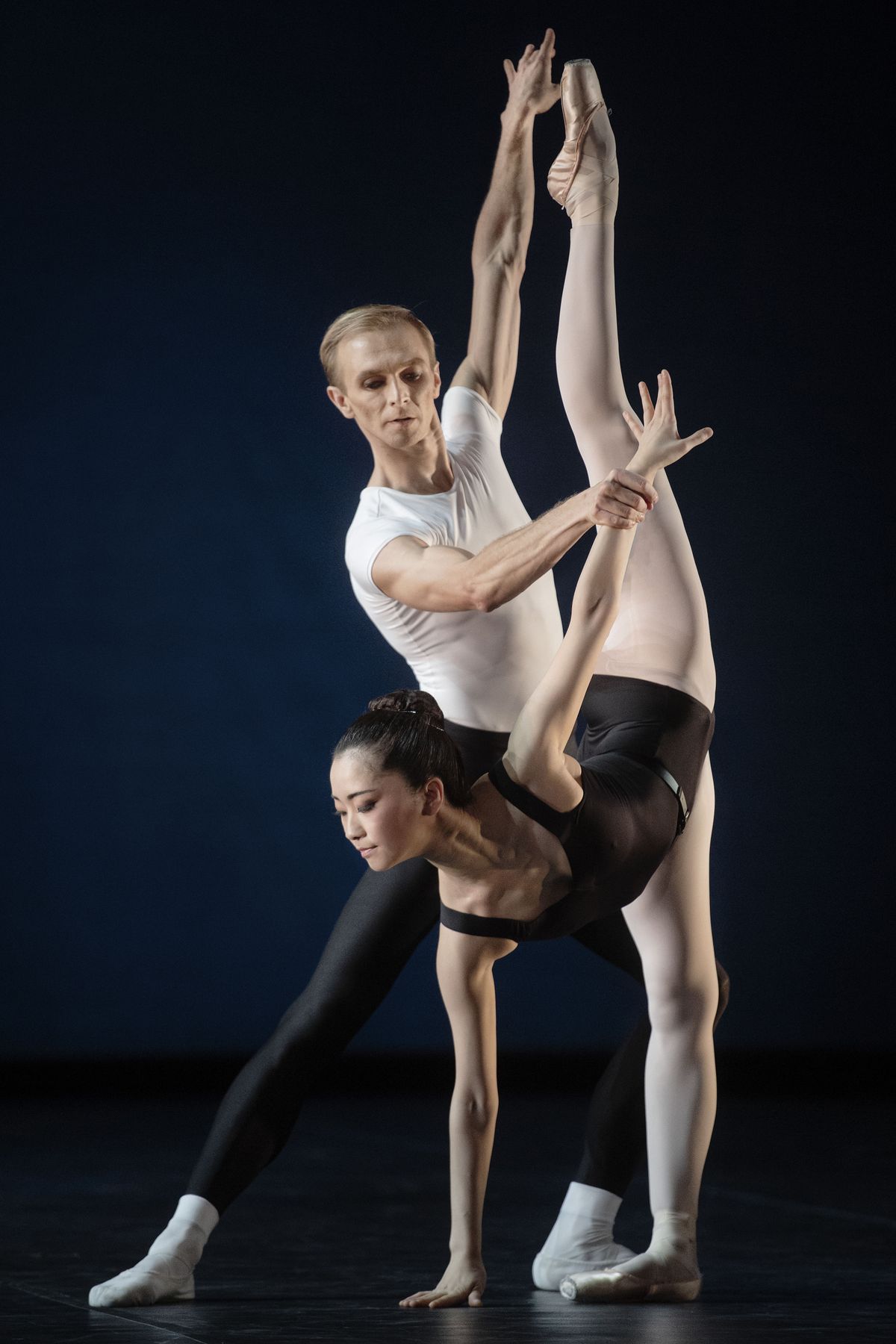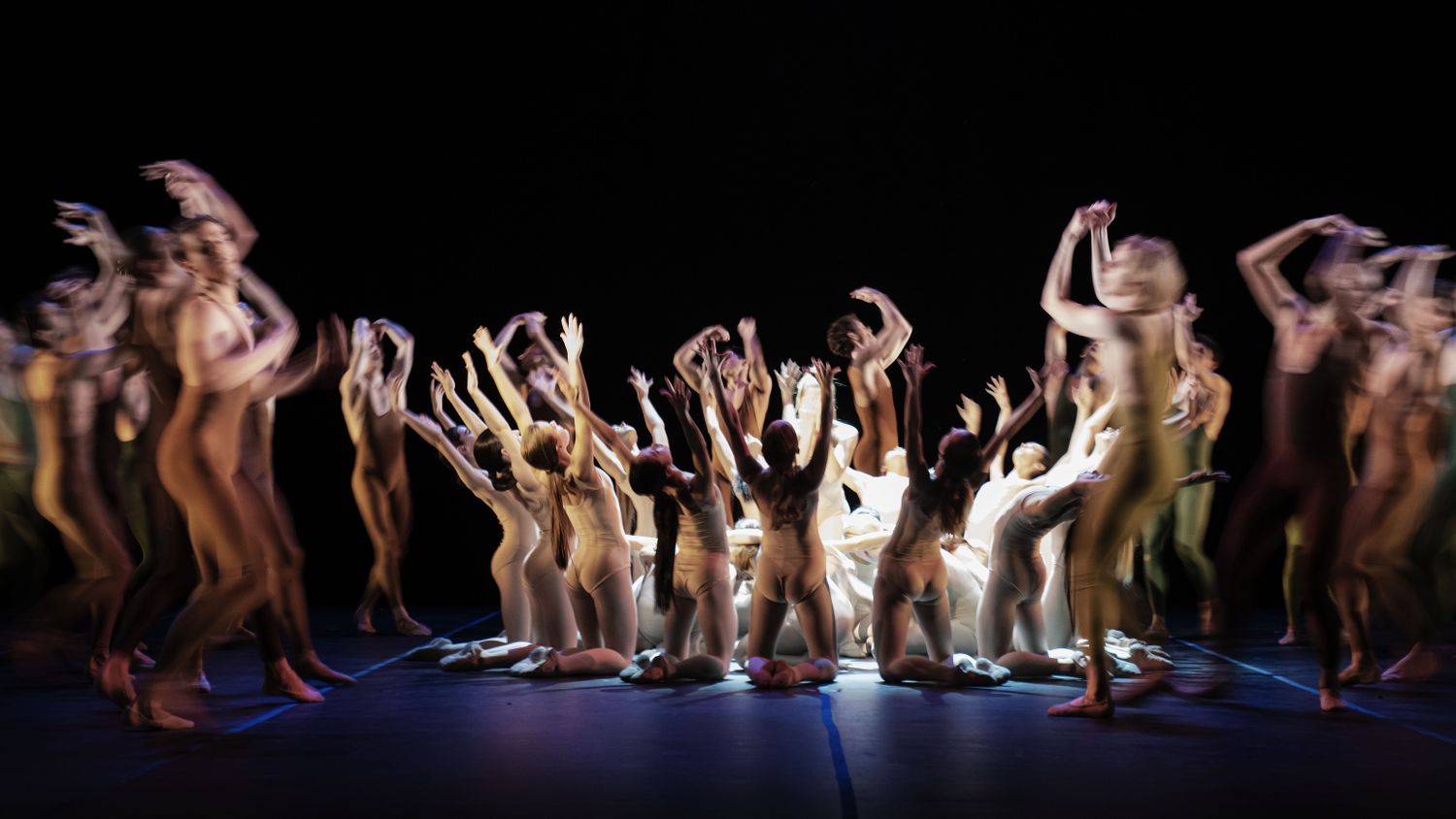Noces / Agon / Rite of Spring, all set to music by Stravinsky.
A ballet evening with three pieces. The second part reminded me of a ballet I think we’ve seen previously but I couldn’t remember any details, nor find them here on the blog. So I’m going to take better notes this time.
Noces, choreography by Angelin Preljocaj. On a scale from abstract ballet to storytelling, this leaned towards the latter – something about wedding rites. Five couples, the women in dresses of vaguely Eastern European style, the men in white shirts and ties. Sometimes they were throwing around human-sized rag dolls clothed in white wedding dresses. Frankly I had difficulty focusing on the dancing because the music was jarringly, distractingly shrill and unpleasant. But the dresses were beautiful: knee-length velvet in deep, rich jewel tones, with wide skirts and embroidered/appliqued borders.

Agon, choreography by George Balanchine. This was very much an abstract ballet. It was somewhat like a symphony, made up of a number of movements. The dancers (six men, six women, in simple black and white leotards) simply gave physical form to the music. As the music reached for a high note, the dancers reached up; as the music paused, so did the dancers. And sometimes the dancers drive the music, rather than vice versa: the dancers’ first steps are a signal to the orchestra to start.
The elements felt classical – plenty of arabesques and stretched toes – and the overall impression was of grace and elegance, but with plenty of modern, humourous touches. Pas de deux with a man and a woman in their traditional roles alternated with parts where men and women performed the same steps and movements.
I would have enjoyed this ballet more if it wasn’t so broken up. Many of the movements ended with bows to the audience, which naturally invited applause. These breaks kept knocking me out of my flow and concentration, and just as I was getting into it again, there was another pause for applause.

The Rite of Spring, choreography by Maurice Béjart. If the first of tonight’s ballets told a story, and the second was abstract, then this one communicated emotions: youth, energy, joy and awakening, unashamed sexuality. Some versions of the Rite of Spring are aggressive and the rite is one of sacrifice; this one was full of vitality and sensuality. So easy to enjoy.
The Royal Opera still doesn’t allow any photography, and the official photos I could find tend to focus on the final climax, but I found some of the earlier, all-male scenes with their trembling, newly woken animal bodies even stronger. I also enjoyed the geometrical scenes, where all the dancers arranged themselves in lines and moved as a strong, vibrant mass of bodies.
(Pictures not mine, they’re press photos provided by the Royal Opera.)
Leave a comment